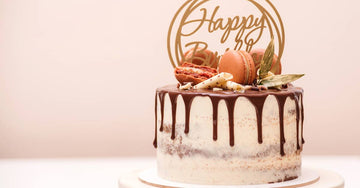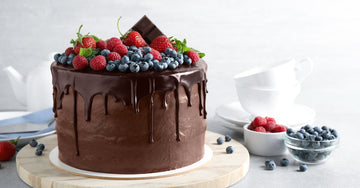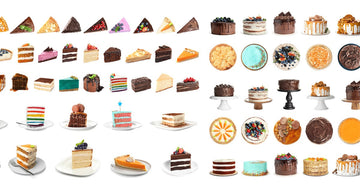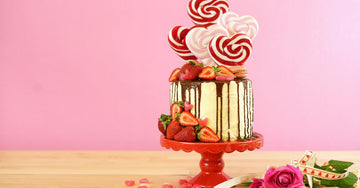When it comes to cake decorating, the frosting and glaze are the crowning jewels that can transform a simple cake into a masterpiece. These delicious toppings enhance the flavor of your cake while adding a visual appeal that can make any occasion special. Whether you're a novice baker or a seasoned pro looking to try something new, this starter guide will provide you with everything you need to know about making frosting and glaze for cakes.
The Difference Between Frostings and Glazes
Frostings and glazes serve distinct purposes in cake decorating, and understanding their differences is key to choosing the right one for your cake. Frostings are thicker and creamier, providing a rich layer of flavor and texture. They’re often used for filling, coating, and creating decorative effects with piping.
On the other hand, glazes are thinner and can be poured over cakes to add a shiny finish. They create a smooth surface that seals in moisture while adding a hint of sweetness or tang.
Both frostings and glazes have their unique characteristics and uses, which we’ll explore further as we look at different types of each.
Understanding Popular Frostings for Cakes

There are many different types of frostings that you can use to decorate cakes. Each one has a unique texture, flavor, and consistency, giving you plenty of options to find the perfect complement to your dessert.
Buttercream is perhaps the most popular frosting used in cake decorating. Made from butter, sugar, eggs, and a splash of milk, buttercream frosting is known for its smooth, creamy texture and its ability to hold intricate designs. The sweetness of buttercream pairs beautifully with a variety of cake flavors, making it a versatile choice for bakers.
Whipped frosting is another favorite, offering a light and airy texture that complements lighter cakes such as sponge or chiffon. This type of frosting is often made with heavy cream whipped to soft peaks, providing a less sweet, more subtle topping that lets the cake's flavors shine through.
Cream cheese frosting is a rich, tangy option that's perfect for cakes like carrot cake or red velvet. Its thicker consistency makes it ideal for spreading between cake layers or covering the entire cake.
For a more decadent option, consider using ganache frosting, made from chocolate and heavy cream. This luxurious frosting offers a shiny finish and a rich chocolate flavor that's perfect for chocolate lovers.
Each of these frostings starts with a few basic ingredients, but by altering the ratios and adding flavorings, you can create endless variations to suit your taste.
Tips for Perfecting Your Frosting
Getting the perfect frosting can be a challenge, but with a few tips, you can create a smooth, delicious topping every time. First, always start with room temperature ingredients. This ensures everything blends together smoothly, without lumps. Cold butter or cream cheese can result in a lumpy frosting, so give them time to soften before you start mixing.
The order in which you add ingredients is also crucial, so pay close attention to your recipe. When you add your sugar, pour slowly and allow it to fully incorporate before adding more. This gradual addition prevents graininess and helps achieve the perfect consistency.
Exploring the World of Cake Glazes

Glazes are another delicious way to finish off a cake, offering a glossy, smooth coating that can add a touch of elegance to any dessert. Chocolate glaze is a classic choice, made by melting chocolate with a bit of butter or cream for a rich, glossy finish. The key to a successful chocolate glaze is to use high-quality chocolate and to melt the chocolate in short bursts to prevent overheating.
Fruit glazes, on the other hand, are made by cooking down fruit juice or puree with sugar, resulting in a sweet, tangy topping that pairs wonderfully with light, fruity cakes.
Mirror glaze is a more advanced technique that has gained popularity for its smooth, reflective finish. Made with gelatin, chocolate, and condensed milk, mirror glaze requires precise temperature control to achieve its signature shine. While it may seem intimidating, with practice, it can become a beautiful addition to your cake-decorating repertoire.
Regardless of the type of glaze you choose, be sure to apply it while the cake is slightly warm to help it spread over the entire surface. Pouring the glaze over the cake from the center allows it to flow naturally, creating a smooth, even coating.
Troubleshooting Common Frosting and Glaze Problems
Even experienced bakers can encounter issues when working with frostings and glazes. One common problem is graininess, which can occur if the sugar in your frosting or glaze isn't fully dissolved. To avoid this, make sure to sift your powdered sugar before adding it to your frosting. When making glazes, heat the mixture slowly and stir frequently to help the sugar dissolve completely.
Melting is another issue that can arise, especially in warm weather. If your frosting is too soft or runny, try chilling it in the refrigerator for a few minutes before attempting to spread it. To prevent your frosting or glaze from melting after decorating, keep your cake in a cool place and avoid exposing it to direct sunlight.
Remember, practice makes perfect. With enough time and experience, you'll learn how to troubleshoot and fix any frosting or glaze issues that come your way.
Creative Combinations of Frostings and Glazes
Once you've mastered the basics of making cake frostings and glazes, you can start experimenting with different combinations to create unique and delicious cake designs. For example, try layering a rich chocolate ganache with a light whipped frosting for a decadent treat. Alternatively, pair a tangy cream cheese frosting with a sweet fruit glaze for a refreshing and flavorful combination. Mixing and matching different flavors and textures can lead to exciting new creations that are sure to impress your friends and family.
Don't be afraid to get creative with your color palette as well. Adding food coloring to your frostings and glazes can help you achieve vibrant, eye-catching designs that make your cakes stand out. You can also use piping techniques and decorative tools to add intricate patterns and designs to your cakes. Remember, the possibilities are endless, and the only limit is your imagination.
Master the Art of Decorating With Damask Cakes
Baking a masterpiece is easier than ever with the easy-to-follow cake baking sets from Damask Cakes. With our pre-measured ingredients and comprehensive instructions, you can create a beautiful and delicious cake that will be the star of the dessert table. Check out our different recipes and find the perfect cake for your next gathering today!





